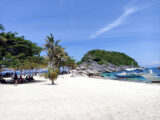Language
The Philippines is home to approximately 180 living languages. Most native languages are local branches from the Malayo-Polynesian languages, which are themselves branches of the Austronesian language family. Eight major languages along with their dialects are the mother tongues of about 90% of the population.
Filipino and English are the official languages in the country and are used in government, education, print, broadcast media and business. Other widely spoken languages include Tagalog (from which Filipino is derived), Cebuano, Ilocano, Hiligaynon (Ilonggo), Bikol, and Bisaya (Binisaya). The mixing of English and other local languages (usually Tagalog) in conversation is common (sometimes referred to as code-switching). Spanish, which was widely spoken during the late nineteenth century, is rarely used, however its influence on the various local languages and the culture is immense.
Until the arrival of the Spaniards in the sixteenth century, there was no national or unifying language in the country. During the centuries of Spanish colonial rule, the Spanish language became the defacto language across the country, widely used in education, religion, and government. The 1899 Malolos Constitution proclaimed Spanish as the official language of the First Philippine Republic.
The use and influence of Spanish gradually declined through the Japanese occupation in World War II as well as with the U.S. occupation. English was taught in schools and gradually replaced Spanish as the primary language used across the country. The independence of the Philippines and the 1935 Constitution named both Spanish and English as official languages but also started the process of establishing a native national language.
Filipino or Tagalog?
On November 12, 1937, the First National Assembly created the National Language Institute. The purpose was to choose a national language from the regional languages. On December 30, 1937 Tagalog was chosen as it was the most widely spoken and developed. In 1939, the Tagalog language was renamed as Wikang Pambansa (“national language”) and further renamed in 1959 as Pilipino.
The 1973 constitution declared the Pilipino language to be co-official, along with English, and mandated the development of a national language, to be known as Filipino. The 1987 Constitution declared Filipino to be the national language of the country. Filipino and English were named as official languages, recognizing regional languages as having official auxiliary status in their respective regions.
The study of languages across the Philippines is a fascinating and extensive topic. For more information about the history, currently used languages and their geographic distribution and much more please check out the links below in the References section for much more in-depth coverage.
References
- 170+ Languages Spoken in the Philippines (Living Dialects) – Philpad
- Filipino Language – Wikipedia
- Filipino? Tagalog? Pilipino? – Tagalog Lang
- Languages of the Philippines – Wikipedia
- Philippines Language History: Exploring Cultural and Linguistic Heritage – thewordpoint
- Urbanization World Night Lights Map.jpg – eutrophication&hypoxia / Flickr


